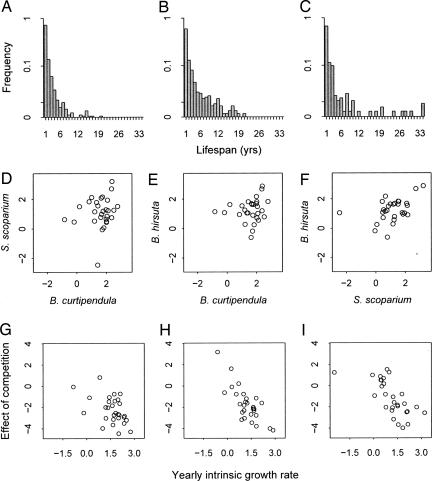Fig. 2.
Evidence for the three conditions of the storage effect. (A–C) B. curtipendula (A), B. hirsuta (B), and S. scoparium (C) have the potential for long lifespans, buffering population growth as required by condition 1. (D–F) Comparisons of exponential yearly intrinsic growth rates for each pair of the three species in each of 29 years show considerable scatter (ρ = 0.17, 0.17, and 0.44, respectively), evidence that the species differ in their response to interannual variability (condition 2). (G–I) For B. curtipendula (ρ = −0.49, P = 0.009) (G), B. hirsuta (ρ = –0.78, P < 0.0001) (H), and S. scoparium (ρ = –0.67, P < 0.001) (I), competition had stronger negative effects on growth in years of high intrinsic growth rates (more favorable years), satisfying condition 3. Positive values, indicating that crowding caused relative increases in growth rates, occurred in years of low intrinsic growth rates.

